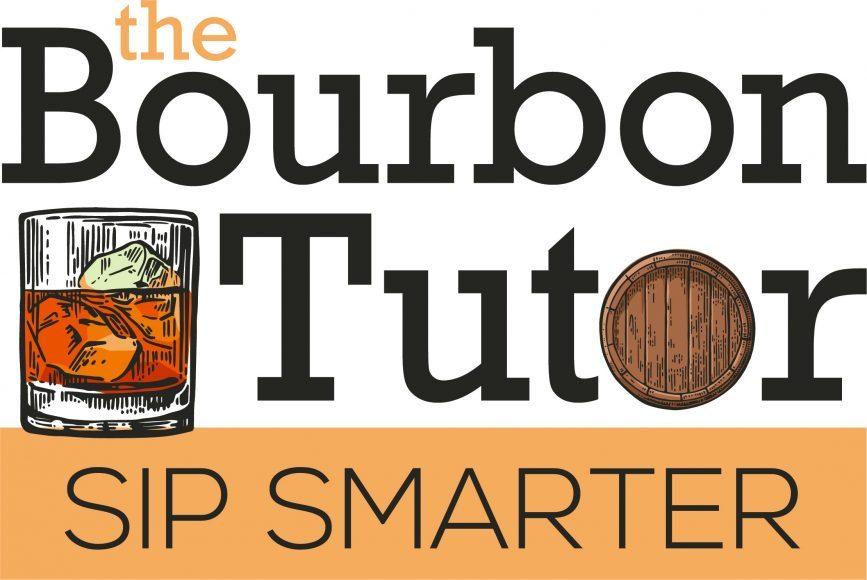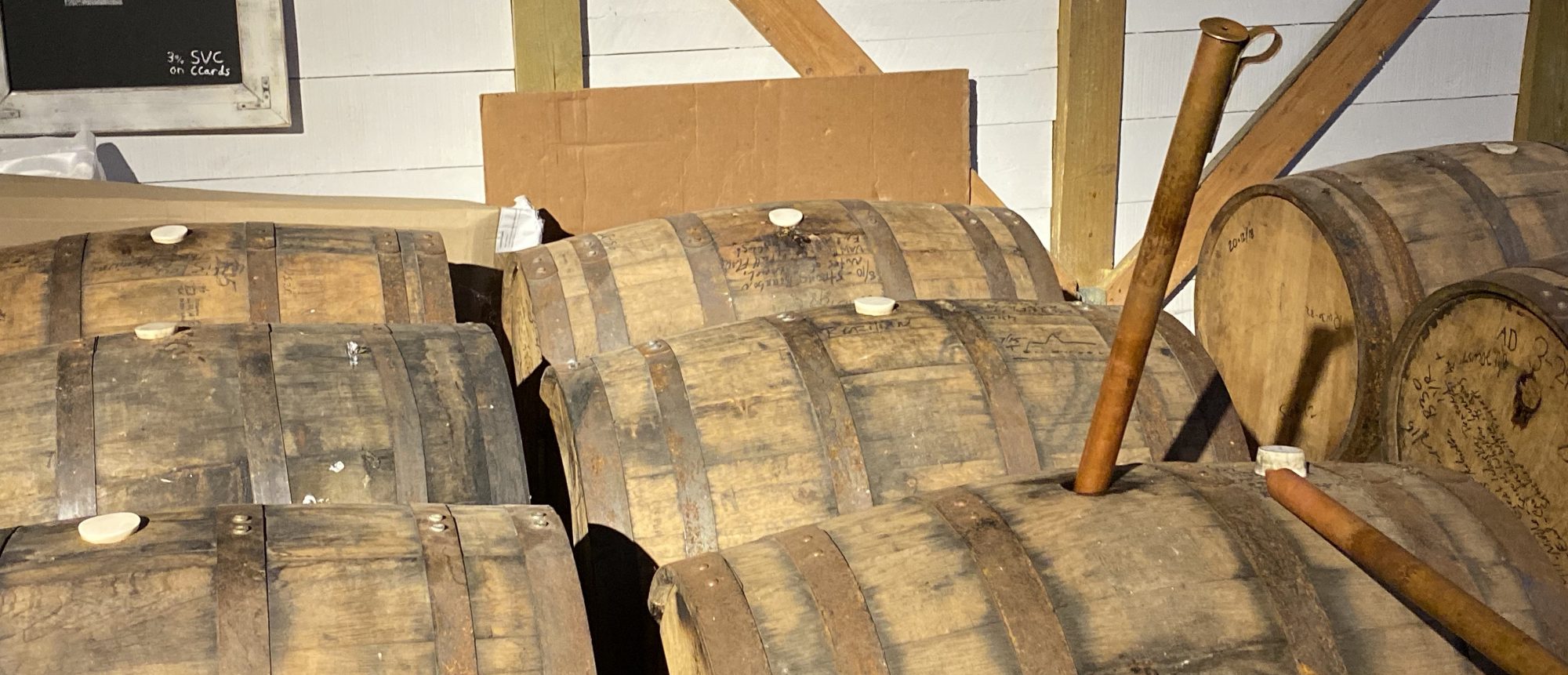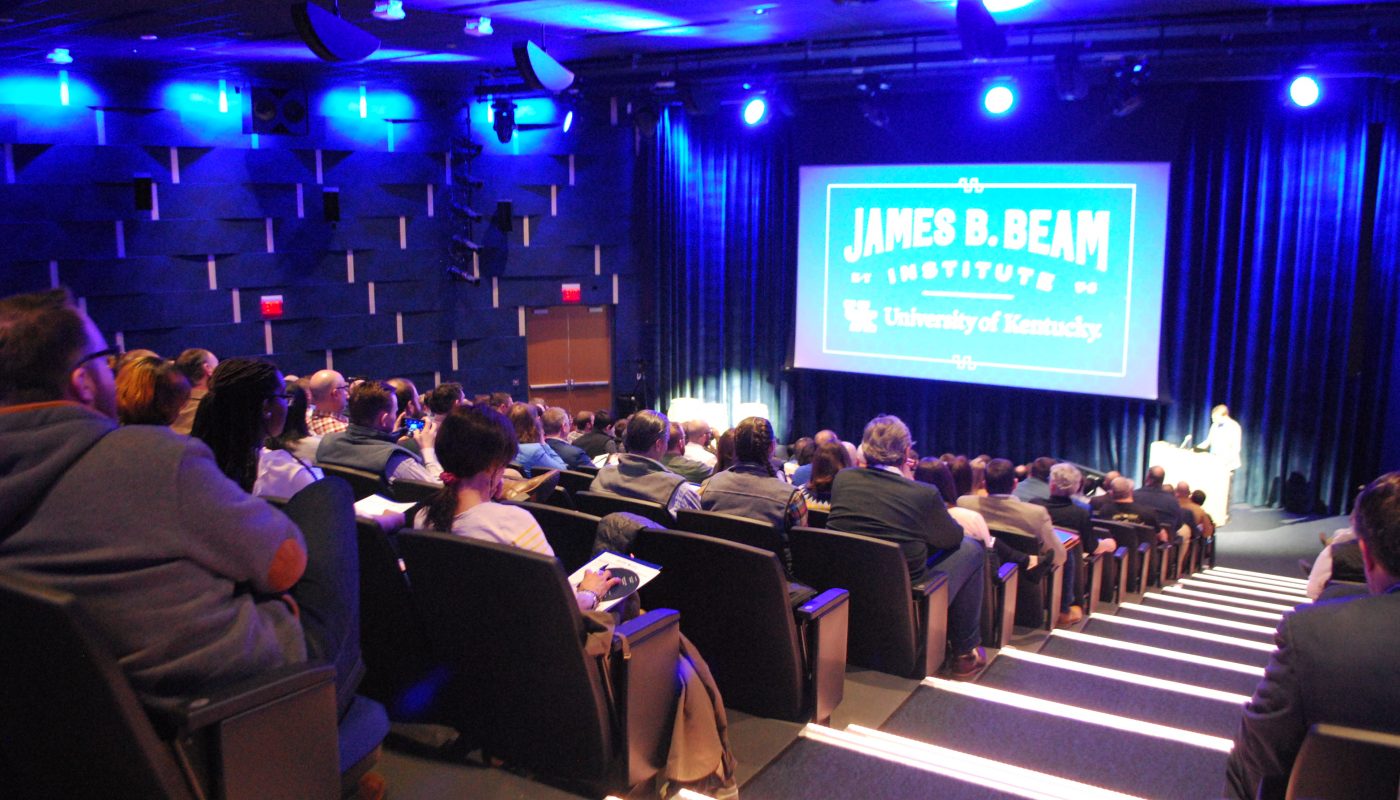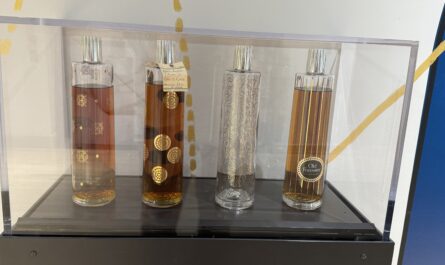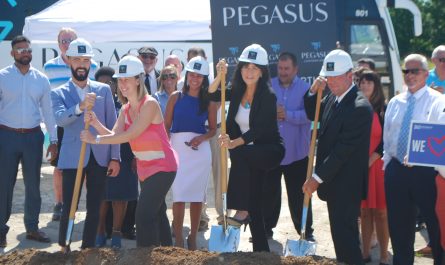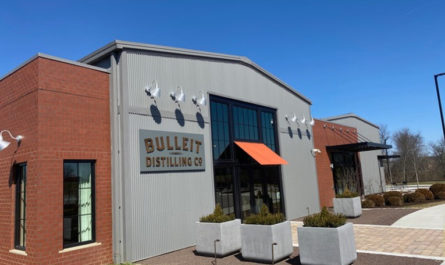By Brian G. Miller
What do the people who work in the bourbon industry do for professional development, to get better at their jobs? I got an inside look during the inaugural James B. Beam Institute bourbon industry conference held recently on the University of Kentucky campus in Lexington.
More than 400 people from several states gathered for a daylong series of nuts-and-bolts presentations about the workaday world of making bourbon. This wasn’t a day for the casual bourbon enthusiast, but they let me go anyway. These people work every day in some capacity in the bourbon industry – from farming to distilling to managing the supply chain of materials that go into the end product. They gathered at UK’s Gatton Student Center looking for information on how to improve their workplace performance, whether their workplace is a farm, a distillery or warehouse, an office, a bottling plant, or even a bourbon distillery tour.
The Beam Suntory Company donated $5 million to start the James B. Beam Institute in partnership with UK with a stated goal of “educating our industry’s next generation, and researching ways to do it more efficiently, and more sustainably.”
Sessions at this first industry conference, in collaboration with the Kentucky Distillers Association, covered topics including The Noble Oak, Grains, Fermentations, Spent Grains, the Warehouse, and Maturation and Logistics.
Between speaker sessions, attendees wandered around a trade show of various vendors and suppliers who provide tools, equipment, and services to the bourbon industry. Imagine the hall of exhibitors at the Kentucky State Fair, but in this case, the eclectic group of businesses all has something to do with the process of making Kentucky bourbon.
Whether you need help with building or equipping a distillery; hiring new people; training them on safety or environmental issues; keeping your facility safe from bugs or fire; legal advice; buying barrels, malted barley, yeast, or other supplies; or the latest scientific research involving bourbon distilling; you could stop at more than 30 booths at the Vendor Expo to talk to someone who is an expert in that field.
During one break, a panel of more than a dozen master distillers and bourbon industry executives spoke to the media about the future of the industry and the Beam Institute. Before it started, I witnessed a special moment: Freddie Noe, an 8th generation distiller at Jim Beam and his father Fred Noe, the Master Distiller at Jim Beam, met and shook hands with Shawn Edwards, the founder of Fresh Bourbon Distilling Company in Lexington, the first black-owned distillery in Kentucky.
“This partnership with the University of Kentucky can bring all the distillers together. We are a unique industry; we do get along. Very (rarely) do you see peers who compete on the shelf, get together and enjoy each other’s company. But I can see us all working together as a group to help this industry be the number one whiskey in the world. That’s what we’re all striving for.”
Fred Noe, Master Distiller, Jim Beam Distillery
After his remarks, Brad Boswell, CEO at Independent Stave Company (ISC), announced the company and his family are donating $1 million to the University of Kentucky to build a 600-barrel bourbon warehouse on campus. The maturation facility, to be called the Independent Stave Company-Boswell Barrel House, will help the Beam Institute’s research distillery train young distillers and experiment with barrel aging spirits.

(Photo credit: UK)
Bourbon is all about the water
During the midday break, I walked among more than a dozen impressive academic posters on display where undergraduate and graduate students from the University of Kentucky stood ready to explain the various research projects they have been conducting in cooperation with the distilled spirits industry in the state.
“Simulation of Drought Risk Scenarios on Distillery Sourced Waters Using a Two-System Hydrological Model” caught my eye (and why wouldn’t it?). I stopped to talk to Sarah, a senior at UK who is graduating in May, about her project.
Sarah and a faculty member worked with the Kentucky Water Resources Research Institute and Beam Suntory to create simulations for a 25, 50 and 100-year drought to see how the local water supply for the Jim Beam Distillery in Clermont, KY would hold up, especially if Beam continues to increase bourbon production.
“I was really interested in water purification and conservation. In the spirits industry, water is their key ingredient; they survive off of water. So they also really care about the sustainability and conservation of their water,” Sarah told me.
While the primary water sources would fare well, one of the recommendations that came from her research is to look into rainwater harvesting, using the considerable roof areas of the rickhouses by adding gutter systems, which could add up to 45 million gallons of rainwater a year.
After touring the posters, I grabbed a box lunch and sat down at a table with people who turned out to be from the Global Operations and Supply Chain Department with the Jim Beam Brands Company. When I asked why they were here today, Jessica Robey said, ”Two of my team members actually came to me and they were interested in learning more about the distillation side, the grain side. We work in supply planning, so we do understand some pieces of that.” Her team will also be working with an intern program, helping young people get into the industry.
Supply Chain team member Daniel Pollis said, “Doing things like this helps me get away from the computer and refocus on the art of this industry and renew my appreciation for it.”
After several failed attempts to describe Supply Chain, I admitted defeat. Jessica explained, “We do end-to-end inventory. We make sure we have bottles, liquid, labels, caps. We make sure for the world of Jim Beam’s demand, that we can supply it.”
On a break between the afternoon sessions, I stopped at the vendor booth for a company called Enerfab. I talked to Adam Hock, Director of Business Development, for what he described as a fabrication, construction, and maintenance company based in Cincinnati. After initially building brewing facilities like Anheuser-Busch, Miller-Coors, and Sam Addams, they have shifted focus to building fermenters, storage tanks, and doing steel/pipe fabrication, electrical, and plumbing work for the bourbon industry.
Enerfab also works in a variety of industries, including chemical, food and beverage, industrial, and oil and gas, according to Adam. “This market is really unique, more unique than any other industry we serve. It’s a great industry because of the people,” Adam said. “Everyone is high-fiving right now, things are going well, people are making money. It’s a good market to be in.”
Things you might not know about making bourbon
Here is just a sampling of the interesting items I (a relative bourbon civilian) learned during the day of the nearly 30 speakers’ sessions:
- The American white oak, subgenus Quercus alba, is the oak of choice for bourbon barrels thanks to the flavor it brings to the liquid, its strength and sustainability, and its resistance to decay and leaking. The hardwood grows in central and eastern North America, including Kentucky. (Federal law requires the single use of a charred oak barrel to make bourbon, but doesn’t specify white oak or the other types that are also used in whiskey and wine maturation.)
- ISC and Maker’s Mark Distillery and other partners are working on a genome sequence project with 300-500-year-old oak trees on the Maker’s Mark farm to essentially determine the DNA of the white oak to help protect the species.
- Sustainability is vital: Planting and growth of new oak trees is currently surpassing harvest by 70 percent.
- Maltster is still a job title today and distillers (and brewers) cannot do their jobs without those who oversee the steeping, germinating and kilning (roasting) of various grains like barley in the malt house.
- Kentucky Proud products, including corn and other grains grown in the Commonwealth, play an important part in the distilling process at both large and craft distilleries in Kentucky bourbon country.
- “Clean distilleries make better whiskey than dirty ones.”
- The amount of “spent grain” left over after distilling bourbon is significant and responsibly dealing with what is essentially industrial waste is a major issue for distillers. “Cattle are great up-cyclers,” but can’t consume everything being produced. The leftovers, called stillage, can be a major expense for farmers to transport to feed their cows, even when it’s free. Even a small distiller can have more than 15 tanker trucks of stillage a day that needs to be hauled away. Some distilleries, such as Wilderness Trail Distillery in Danville, are doing some innovative things to reduce, reuse, and recycle this daily waste by as much as one-third.
- “Powderpost beetles” are the scourge of the bourbon warehouses, known as rickhouses or rackhouses, because the larvae infest the structural wood for 1 to 5 years and reduce it to powder. Thankfully, they don’t like alcohol or the heartwood of the oak barrels. But the oak timber worm does like oak and can imbed itself in the wood while still in the forest, creating tiny holes in the barrel later. Major research is being done with the bourbon industry, the University of Kentucky College of Agriculture, Food, and Environment, and others dealing with these pest issues.
- The temperature swings inside a warehouse full of 50,000 barrels of bourbon can essentially create its own weather system, including fog, ice, and even rain. While those temperature swings help create the bourbon, the resulting corrosion and rust can be bad for the barrels, the electrical conduits, and other metal in the buildings. The industry is working with faculty and students in the UK Department of Mining Engineering to study this problem because the ventilation and moisture issues are similar to those in coal and other mine operations.
- New oak barrels have standard levels of charring (from #1 flash to #4 deep char, or alligator char, that takes 55 seconds.) Rotating a barrel over an oak fire pot can take from 10 minutes up to an hour, resulting in 150 different toasting profiles. The “red layer” beneath the char or toasting is what ultimately gives the bourbon its flavor as it goes in and out of the wood.
- Bourbon is an $8.6 billion industry in Kentucky and has tripled in the last 10 years. There are more than 9 million barrels of bourbon (and other spirits) currently aging in the state – more than two barrels for each man, woman, and child in Kentucky. The bourbon industry is currently in the midst of a $2.3 billion building boom, generates a $1 billion payroll, and pays $235 million in state and local taxes each year. For the 4th straight year, Kentucky will have more than one million bourbon-related visitors. After creating 21,000 jobs, tour guides (and many others) are still needed.

The first James B. Beam Institute Industry Conference ended the day a rousing success. Especially considering it was one of the few bourbon industry-related events I’ve ever attended where bourbon was not served. Plans are already being made for next year’s event. If you’re truly interested in the burgeoning business of bourbon, you might want to keep an eye out for the dates and registration forms. Watch this space.
This article also appears on the blog of our friends at Moonshine University. Check it out here.
